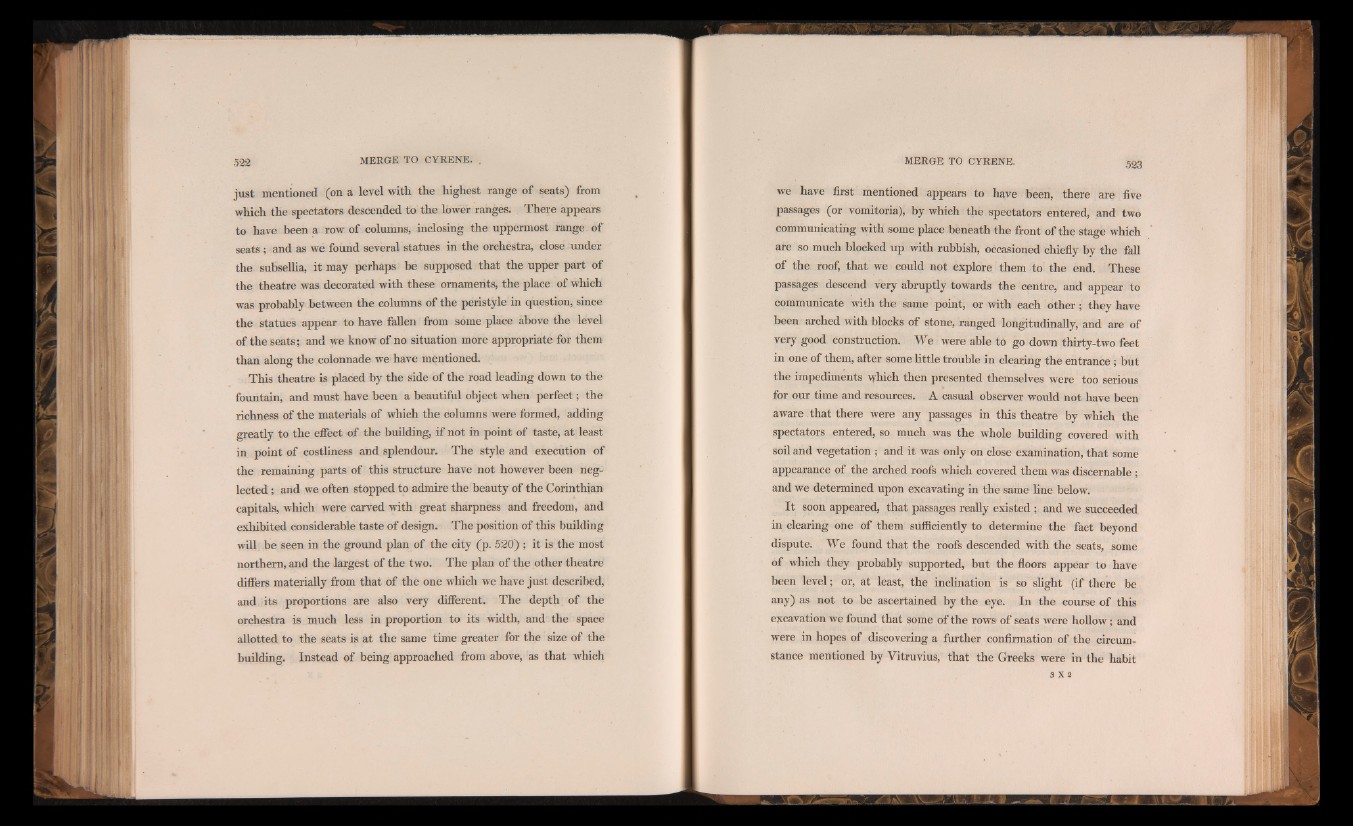
just mentioned (on a level with the highest range of seats) from
which the spectators descended to the lower ranges. There appears
to have been a row of columns, inclosing the uppermost range of
seats ; and as we found several statues in the orchestra, dose under
the subsellia, it may perhaps be supposed that the upper part of
the theatre was decorated with these ornaments, the place of which
was probably between the columns of the peristyle in question, since
the statues appear to have fallen from some place above the level
of the seats; and we know of no situation more appropriate for them
than along the colonnade we have mentioned.
This theatre is placed by the side of the road leading down to the
fountain, and must have been a beautiful object when perfect; the
richness of the materials of which the columns were formed, adding
greatly to the effect of the building, if not in point of taste, at least
in point of costliness and splendour. The style and execution of
the remaining parts of this structure have not however been neglected
; and we often stopped to admire the beauty of the Corinthian
capitals, which were carved with great sharpness and freedom, and
exhibited considerable taste of design. The position of this building
will be seen in the ground plan of the city (p. 520) ; it is the most
northern, and the largest of the two. The plan of the other theatre
differs materially from that of the one which we have just described,
and its proportions are also very different. The depth of the
orchestra is much less in proportion to its width, and the space
allotted to the seats is at the same time greater for the size of the
building. Instead of being approached from above, as that which
we have first mentioned appears to have been, there are five
passages (or vomitoria), by which the spectators entered, and two
communicating with some place beneath the front of the stage which
are so much blocked up with rubbish, occasioned chiefly by the fall
of the roof, that we could not explore them to the end. These
passages descend very abruptly towards the centre, and appear to
communicate with the same point, or with each other; they have
been arched with blocks of stone, ranged longitudinally, and are of
very good construction. We were able tó go down thirty-two feet
in one of them, after some little trouble in clearing the entrance ; but
the impediments \yhich then presented themselves were too serious
for our time and resources. A casual observer would not have been
aware that there were any passages in this theatre by which the
spectators entered, so much was the whole building covered with
soil and vegetation ; and it was only on close examination, that some
appearance of the arched roofs which covered them was discernable ;
and we determined upon excavating in the same line below.
I t soon appeared, that passages really existed ; and we succeeded
in clearing one of them sufficiently to determine the fact beyond
dispute. We found that the roofs descended with the seats, some
of which they probably supported, but the floors appéar to have
been level; or, at least, the inclination is so slight (if there be
any) as not to be ascertained by the eye. In the course of this
excavation we found that some of the rows of seats were hollow; and
were in hopes of discovering a further confirmation of the circumstance
mentioned by Vitruvius, that the Greeks were in the habit
3X2